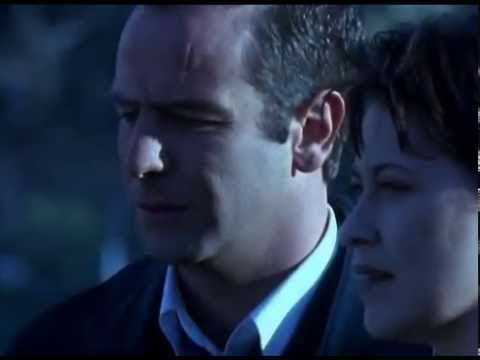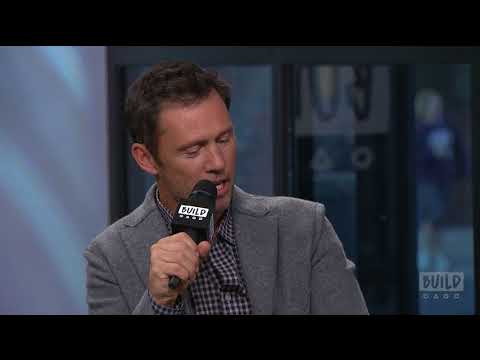Bruce Willis never made the jump from actor to director that contemporaries like Kevin Costner and Denzel Washington did, but he was still no slouch behind the camera.
Besides some writing on projects like “Hudson Hawk,” Willis built a unique filmography as a producer. He worked behind the scenes on his own films like “Hostage” in 2005 and even helped bring Steve Irwin to the big screen with 2002’s “The Crocodile Hunter: Collision Course,” all through his Cheyenne Enterprises with producing partner Arnold Rifkin.
The strongest project Willis focused on as a producer that did not involve him as an actor is near impossible to find today: “Touching Evil.”
The 2004 series is led by some major stars right before they broke big. Jeffrey Donovan led as Detective David Creegan a few years before his long run on “Burn Notice” (which also aired on USA Network).
Vera Farmiga portrayed Creegan’s partner Detective Susan Branca prior to sizable roles in “The Departed” and “Bates Motel.”
Bradley Cooper shows up in a recurring role as an FBI agent long before “The Hangover,” “American Sniper” and “A Star Is Born.”

Based on a longer-running British drama, “Touching Evil” follows Creegan as he works his way back into his job after taking a bullet to the head and a subsequent stay in a psychiatric hospital.
The show embraces its noir roots right from the get go, opening above the clouds on the Golden Gate Bridge. Then we fall to Creegan, driving and determined, but with intentions we question when we see him walk into a house. He pulls out his gun as if he’s skipped the badge part and now he’s just hunting.
The opening ends with Creegan finding a cat in a room alone and then a masked man getting the drop on him from behind, shooting Creegan in the head. The character crashes through a window and takes a giant fall as appetizer and dessert to go with his entree brain injury.
One might expect this is where a story jumps to a new character, with Creegan serving as a moody plot device. That’s not the case in “Touching Evil.”
“Touching Evil’s” content was better suited for a streaming service or an HBO-level channel. It has all the regular workings of a cop drama, but its dark premise and unpredictable main character requires the story to veer more toward the gray lines that can separate good from bad, sane from insane, hero from villain.
Cop dramas in 2004 just weren’t quite there yet. The pressure to catch the bad guy and wrap things up in 40 or so minutes was too big at the time.
FAST FACT: The invaluable web site JustWatch.com says “Touching Evil” isn’t currently available for streaming.
Creegan’s struggles since taking a bullet are sometimes played for laughs (he says it led to a chemical inability to feel shame), but it also leads to some of the show’s best aspects. Consider a recurring character named Cyril, played by Pruitt Taylor Vince. The former psychiatric patient struggles to differentiate between reality and fantasy and is initially seen as a suspect.
Creegan dismisses the possibility outright.
He’s able to talk to Cyril, teetering between challenging and accepting his fantasies about interplanetary travel, because he sees himself in him. It’s a revolving question in the show: does Creegan identify more with the outsiders and crooks than he does his fellow police after his injury, recovery and captivity?
“Touching Evil” was canceled after just one season. It was far more challenging and dark than USA’s more straight-forward procedural dramas, and it wasn’t given room to breathe or time to find an audience.
Some mistakes were made.
The most glaring is Creegan has a family that is sometimes too awkwardly written into the show, serving mostly as more of a distraction than anything else, as if no one quite figured out how they play into the plot and it’s still being debated throughout the show.
The 13-episode series is a worthy story taken as a whole. A moment between Creegan and Branca at the end of the series plays perfectly into the show’s theme of how precious the lines between extremes are, especially life and death.
Branca: “I sometimes worry that you want to go back. Like it was better over there.”
Creegan: “If I thought it was so great there, I wouldn’t work so hard here.”
Some critics saw something special in the series, including Gillian Flynn, then an Entertainment Weekly critic, long before she would write the bestseller “Gone Girl.”
“‘Evil’ is much more engaging, however, than a mere odd-couple cop show, or even a good serial-killer series. Taking cues from the surreality of ‘12 Monkeys’ and the Hughes brothers’ hyper-stylized ‘From Hell’ (no surprise, since the brothers), ‘Evil’ has created one bitter little fairyland.”
The pilot episode (promo copies can be found on home video) centers on a child kidnapping and it’s an impressive piece of work. The steamy noir look of the series sometimes perfectly clashes with the bright colors of the city. There are multiple impressive sequences (especially for 2004 TV), including a chase through a house of mirrors at a fair (featuring none other than Cyril).
The quality of the pilot is less surprising when you learn that Allen Hughes directed. He returned to direct two more episodes, and this was when the filmmaker (along with his brother Albert Hughes) was fresh off of the documentary “American Pimp” and the Alan Moore adaptation “From Hell.”
He made his bones in the ‘90s with “Menace II Society” and “Dead Presidents.” Hughes keeps “Touching Evil” visually popping without ever being too showy. It’s cinematic and avoids the flat, basic look of other shows in the cop drama genre from the pilot.
“The first time I read the script I knew this would be something very special. I had never read anything quite like this for TV. And when they were foolish to entrust me with the role – I knew they were as crazy as I was,” Donovan told PopGurls about the pilot, which was adapted by Bruno Heller.
According to Donovan, there was some hesitation over him taking the lead in “Burn Notice” after “Touching Evil” failed to find a big audience out of the gate.
“The network had a superstition, a hesitation at first because he had already been on ‘Touching Evil,’ which had failed. We really wanted Jeffrey, and fortunately this time he did anything but fail,” Fox TV Studios president David Madden told The Hollywood Reporter in 2013 as “Burn Notice” was crossing the 100-episode mark.

The cast is justification enough for a proper release of “Touching Evil” today, but Willis’s involvement should not be discounted either. He and producing partner Rifkin were front and center pushing and promoting the show.
If “Touching Evil” had managed a run like its British counterpart, there was a chance we even could have seen a Willis guest spot. The actor was never above TV, having started on “Moonlighting” at the beginning of his career and eventually moving into guest roles on “Friends” and “That ‘70s Show.”
“I’m producing a TV show called ‘Touching Evil’ that’s really good,” Willis told Black Film in 2004, adding he intended to appear on the series at some point.
That’s an exciting “what if” to think about, but luckily Willis has had a versatile and lengthy career where he’s been plenty happy and unafraid to answer “what ifs” about himself as an artist openly through his work.
“Touching Evil” was one of those works, and there’s no reason it should be buried today.
It took a bullet in 2004, but the show deserves a Creegan-style second shot at rejoining the lovely madness of the living.
The post Buried Bruce Willis Drama Brought Future Stars to TV appeared first on Hollywood in Toto.